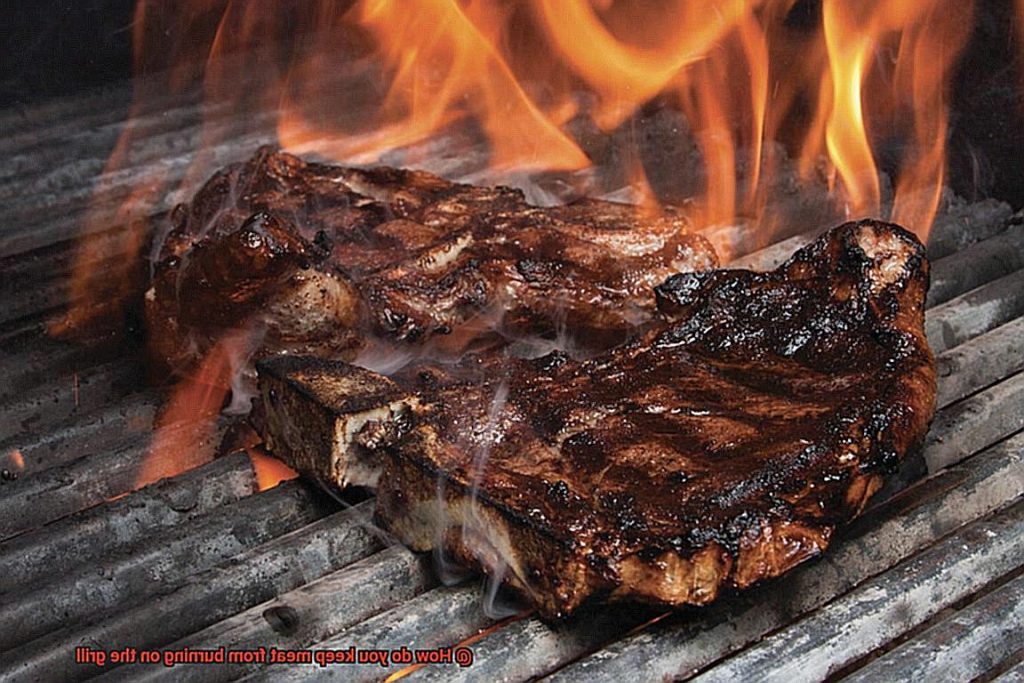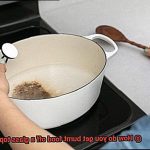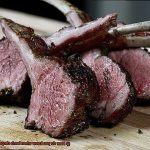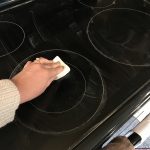Grilled meat is a staple of summertime cookouts and backyard barbecues. There’s nothing quite like the smell of sizzling steak or juicy burgers on the grill. But when that delicious meat ends up burnt to a crisp, it can be a major buzzkill. Don’t let this happen to you – there are simple ways to ensure your meat stays perfectly cooked and never burns.
First things first: start with a clean grill. Old grime and grease can lead to sticking and burning, so give your grates a good scrub down before firing up the flames. Another key tip is to marinate your meat. Not only does this add flavor, but it also helps keep the meat moist and creates a protective barrier against high heat.
Flipping your meat at the right time is crucial too – don’t leave it sitting on one side for too long or you risk burning it. And speaking of heat, finding the right temperature is key. Too hot and you’ll end up with charred bits, but too low and your food won’t cook through properly.
In this blog post, we’ll share our top tips for keeping your grilled meats from burning. Whether you’re an experienced grill master or just starting out, these tricks will help you achieve perfectly cooked meats every time. So grab some tongs and let’s get started.
Contents
Preheat the Grill
Preheating refers to the process of heating up the grill before placing your meat on it. This process typically takes around 10-15 minutes, depending on the type of grill you are using.
Why is preheating so important? Here are a few reasons:
Even Cooking: Preheating ensures that the heat is distributed evenly across the cooking surface, preventing hot spots from developing. This means that your meat will cook evenly and won’t have any undercooked or overcooked parts.
Prevents Sticking: Preheating also helps prevent sticking, which can cause your meat to tear or burn. By heating up the grates, you create a non-stick surface that allows your meat to cook without sticking to the grill.
Kills Bacteria: Preheating helps kill any bacteria that may be present on the grill grates, ensuring that your meat is safe to eat.
To preheat a gas grill, turn all the burners to high heat and let it heat up with the lid closed for about 10-15 minutes. For a charcoal grill, light the charcoal and wait until it turns white, indicating that it’s hot enough to cook on.
It’s essential to note that preheating isn’t just for the initial use of the grill. You should also preheat the grill between batches of meat or when you’re adding more charcoal to a charcoal grill.
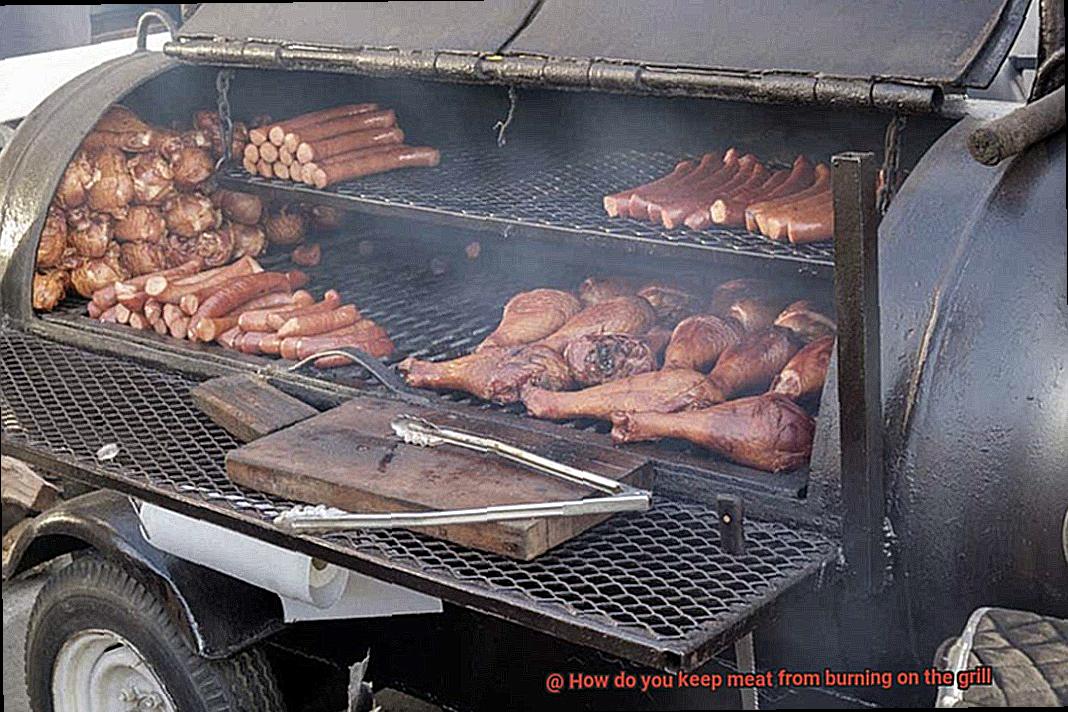
But preheating is just one step in ensuring perfectly cooked meat. Here are a few more tips and techniques:
- Oil your grates before adding your meat to prevent sticking.
- Use a digital meat thermometer to ensure that your meat is cooked to perfection.
Oil Your Grill Grates
Not only does this prevent meat from sticking, but it also ensures even cooking and retains moisture for juicy, flavorful results.
To get started, choose a high-heat oil like vegetable or canola oil. These oils have a high smoke point, making them ideal for grilling. Then use a heat-resistant brush or wad of paper towels to apply the oil evenly all over the grates, covering every inch of the cooking surface.
But don’t just slap on some oil and start grilling right away. Preheat your grill on high for at least 15 minutes to burn off any excess oil and ensure that your grates are hot enough to sear the meat properly. Once preheated, you can adjust the heat to your desired cooking temperature before placing the meat on the grill.
It’s important to avoid using cooking spray on your grill grates as it can cause flare-ups and damage the grates. Stick to using high-heat oils for best results.
Here are some additional tips to keep in mind when oiling your grill grates:
- Clean your grill grates thoroughly before applying oil. Any leftover debris or food particles can cause sticking and uneven cooking.
- Reapply oil between batches of meat or if you notice sticking.
- Use tongs instead of a fork to flip meat on the grill. Piercing the meat with a fork can cause juices to escape, leading to dry and tough results.
Monitor the Temperature of Your Meat
Grilling is a beloved pastime, but it’s not just about throwing meat on the flames and hoping for the best. Achieving perfectly cooked meat requires precision, and that means monitoring the temperature of your meat.
Investing in a meat thermometer is the first step in mastering perfect grilling. There are several types of thermometers available, each with their own benefits. Instant-read thermometers are excellent for quick checks, while probe thermometers allow you to monitor the temperature continuously without having to open the grill. If you prefer a more hands-off approach, a wireless thermometer with a remote probe is ideal.
Knowing the safe internal temperatures for different types of meat is crucial when grilling. Chicken should be cooked to an internal temperature of 165°F (74°C), while beef steaks should be cooked to an internal temperature of 145°F (63°C) for medium-rare, 160°F (71°C) for medium, and 170°F (77°C) for well-done.
To use a meat thermometer, insert it into the thickest part of the meat, making sure not to touch any bones or gristle. Wait for a few seconds until the reading stabilizes, then remove the thermometer. If your meat has reached the desired internal temperature, take it off the grill and let it rest for a few minutes before serving.
By monitoring the temperature of your meat, you can avoid burning it on the grill and ensure that it’s cooked to your liking. It’s easy to get caught up in visual cues or guesswork, but investing in a meat thermometer takes the guesswork out of grilling and guarantees perfectly cooked meat every time.
Use a Two-Zone Cooking Method
Grilling is an art form, and mastering the two-zone cooking method is crucial for any grill master. This technique involves creating two separate heat zones on the grill: one for direct heat and one for indirect heat. By using this method, you can sear your meat to perfection without burning it and then cook it through without charring.
To create a two-zone cooking method, start by preheating your grill to high heat. Once it’s hot, turn off one side of the burners or move the coals to one side of the grill. This will create the two heat zones you need for this technique.
The side without heat is your indirect heat zone, and the side with heat is your direct heat zone. Place your meat on the direct heat zone and let it sear for a few minutes to get those beautiful grill marks. Once seared, move your meat to the indirect heat zone and let it cook through without burning. This will ensure that your meat is cooked evenly and has a delicious smoky flavor.
Here are some pro tips to help you perfect the two-zone cooking method:
- Keep an eye on your meat and flip it occasionally to ensure even cooking.
- Don’t overcrowd your grill. Make sure there’s enough space between each piece of meat for proper air circulation.
- Use a meat thermometer to check the internal temperature of your meat. This ensures it’s cooked through without overcooking or undercooking.
The two-zone cooking method works wonders for all types of meat, but it’s especially useful for thicker cuts like steaks or pork chops. These cuts need a good sear to lock in flavors, but they also need time to cook through without burning.
Keep the Lid Closed
Grilling is an art, and every artist needs to know their tools. One of the most crucial tools in your grilling arsenal is the lid. Believe it or not, keeping that lid closed is the key to unlocking perfectly cooked meat every time.
Why is this? For starters, constantly opening the grill can cause temperature fluctuations that will ruin your meat. By keeping the lid closed, you create a consistent cooking environment that will ensure even cooking and prevent burning.
But that’s not all. Every time you open the grill, oxygen rushes in and fuels any flames on the grill. This can cause flare-ups that will dry out your meat and make it tough and chewy. Keeping the lid closed will reduce the likelihood of flare-ups and keep your meat moist and succulent.
And let’s not forget about the smoky flavor that grilling is known for. Keeping the lid closed allows smoke to accumulate within the grill, infusing your meat with that unmistakable BBQ taste that everyone loves.
Of course, there are exceptions to this rule. If you’re grilling thick cuts of meat, you may need to flip them more frequently to ensure even cooking. And if you’re cooking fatty cuts like burgers or sausages, you may need to open the lid briefly to release excess grease and prevent flare-ups.
Use Aromatics to Add Flavor and Moisture
As a grilling aficionado, you know that perfectly cooked meat is a masterpiece. It’s important to use every tool at your disposal to achieve your goal, and one such tool is aromatics. These herbs, spices, or vegetables release fragrant oils when heated, infusing your meat with flavor and moisture. Here are some tips on how to use aromatics to make your next grilling adventure even tastier:
Garlic is a superstar of the grilling world. Crushed cloves can be rubbed onto meat or skewered alongside it on the grill. Not only does it add flavor, but it also prevents the meat from sticking to the grill. Imagine mouth-watering garlic-infused meats that will have your guests coming back for seconds.
Rosemary is another herb that pairs well with grilled meats, especially lamb. It has a strong and distinct flavor, and fresh rosemary sprigs can be added to the charcoal or wood chips in a smoker box, or mixed with olive oil and brushed onto the meat. Get ready for your taste buds to dance.
Thyme, oregano, and bay leaves are also excellent options for adding flavor to your meat. These herbs can be used in marinades or rubs before grilling or placed on the grill alongside the meat for added depth.
Onions are another aromatic that adds moisture to your meat while it grills. Sliced onions can be placed on top of the meat as it cooks, releasing moisture that helps keep the meat juicy.
Lemons are another secret weapon in grilling. Sliced lemons can be placed on top of the meat while it cooks, adding brightness to its flavor and tenderizing it with its citric acid.
Avoid Crowding the Grill Grates
Grilling is a summer staple, but it’s important to avoid common mistakes that can ruin your meal. One such mistake is overcrowding the grill grates. When too many items are crammed onto the grill, it can lead to uneven cooking and burnt meat. To avoid this, follow these simple steps:
Start by preheating your grill. This is crucial to ensure that the temperature is even throughout the grates, which can prevent burning. Once your grill is hot, arrange your meat with enough space in between each piece. This will allow heat to circulate evenly, resulting in perfectly cooked meat.
If you’re working with smaller pieces of meat like shrimp or chicken wings, consider using skewers. Not only will this create more space on the grill, but it also allows for easier flipping and prevents pieces from falling through the grates. A grill basket is another great option for larger cuts of meat like steak or pork chops and can also be used for vegetables.
While it may be tempting to constantly flip your meat to ensure even cooking, resist the urge. Flipping too often can cause uneven cooking and increase the risk of burning. Instead, allow your meat to cook undisturbed for a few minutes on each side before flipping.
Turn Meat Frequently While Cooking
As a grill master, you know that turning your meat frequently while cooking is the key to achieving perfectly cooked, juicy results. This technique is particularly important for thinner cuts of meat like chicken breasts or pork chops, which can easily burn on the outside while remaining undercooked on the inside if left on one side for too long.
To start, give your meat a few minutes to sear and develop a nice crust on one side before using tongs or a spatula to carefully flip it over. Repeat this process every few minutes until the meat is fully cooked. By turning the meat frequently, you’ll prevent burning and ensure even cooking on both sides.
But what about thicker cuts of meat like steaks or burgers? Frequent turning is just as important for these cuts because they take longer to cook all the way through. By flipping them over regularly, you give each side a chance to cook evenly and avoid ending up with an undercooked center.
Now, you might be worried about losing all those delicious juices every time you turn your meat over. While it’s true that some flavorful juices escape with every flip, limiting your flipping to once every few minutes should keep most of those juices inside.
5Elt4d3cH8Y” >
Also Read: Why did my steak catch on fire?
Conclusion
To truly master the art of grilling, attention to detail is key. Don’t let your meat become a victim of burning. Follow these tips and techniques to ensure perfectly cooked meat every time. Start by cleaning your grill and marinating your meat to keep it moist and prevent burning. Preheat your grill, oil the grates, and monitor the temperature of your meat for optimal results.
Achieving perfectly cooked meats also requires using a two-zone cooking method, keeping the lid closed, and adding aromatics for flavor and moisture. Be sure to avoid common mistakes like overcrowding the grill or flipping your meat too often. With practice, you’ll be able to impress your guests with perfectly cooked meats at any summer gathering.
Don’t forget that grilling should be fun. Experiment with different flavors and cuts of meat to elevate your grilling game. With these tips in mind, you’ll soon become a true grill master.

